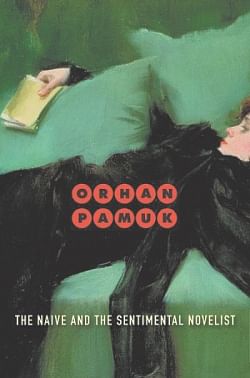| Home - Back Issues - The Team - Contact Us |
 |
| Volume 11 |Issue 03| January 20, 2012 | |
|
|
Book Review The Naïve and Sentimental Novelist by Orhan Pamuk Zarin Rafiuddin
Orhan Pamuk, in his book The Naïve and Sentimental Novelist, depicts the different kinds of entertainment we get from reading novels, its compositions, the different kinds of readers and of course the different kinds of novelists. Pamuk essentially explores the ways we as readers may or may not read a novel. He compares his own experiences and feeling while reading novels which to him are more or less universal. The book also explores the novelists' mentalities when writing novels. Yet as Pamuk says that these are his own beliefs and though the book is a compilation of the Norton lectures he gave they are not meant to oppose or promote any existing theories of the novel. To Pamuk, our love and admiration for the novel exist because we can imagine different angles of a seemingly singular viewpoint or numerous viewpoints. To him the novel allows opposing viewpoints to coexist and have us understand them simultaneously. This is one of the perceptions that make the novel a unique piece of writing and reading experience. In other words, to be paradoxical yet possess sufficient material to allow the paradox to function. There is also something in the reader's mind when reading a novel — how much of this is true and how much of it is real? This game between reader and writer is unavoidable in guessing how much of the novel is, as terms it, “lived experience” despite the novel bearing the label “fiction” on it. Pamuk also introduces imagination as an important feature whilst reading and writing novels. Soon he divides writers roughly into two groups: the naïve and the sentimental. Actually, these designations may overlap each other as Gardner's multiple intelligence tests and a writer need not fall into one extreme or the other but can remain a fusion of both. Pamuk has borrowed these terms from a German essayist named Friedrich Schiller who wrote On Naïve and Sentimental Poetry. Now Schiller does not use the words “naïve” and “sentimental” in the generic fashion: the naïve poet is an outburst of creative energy who does things on his own accord despite the consequences. In contrast, the creativity of the sentimental poet is thwarted by self-reflection on the consequences of what he/she might write. This view on poets is adopted by Pamuk to represent writers and how most writers can stay in the middle of such ideologies. Pamuk gives witty analogies to his works as a writer and the psychologies of people who read novels. To Pamuk the novel amplifies the ordinary into extra-ordinary thus has such popularity and literary value. It can juxtapose ordinary events with spectacular feeling such as shaving one's beard (example from Ulyssesby James Joyce) is given profound meaning which in “normal, realistic” circumstances may not possess such an effect. Writers too try to capture either our “verbal” or “visual” imaginations when writing stories. They want to see how they can pique our interests and use everyday dialogues, nuances and exchanges to do so. These are what the novel is built upon, its backbone and our appeal to it rests there. Pamuk describes novels as landscape paintings: we look into it, examine it, see the emotions of it and sample it. Soon the emotions conveyed by it are carried by us in different ways. The novel has persisted and has been developed in other countries due to this adaptive ability and so we reach into our belongings and pry it out when we want something good to read. Copyright
(R) thedailystar.net 2012 |
